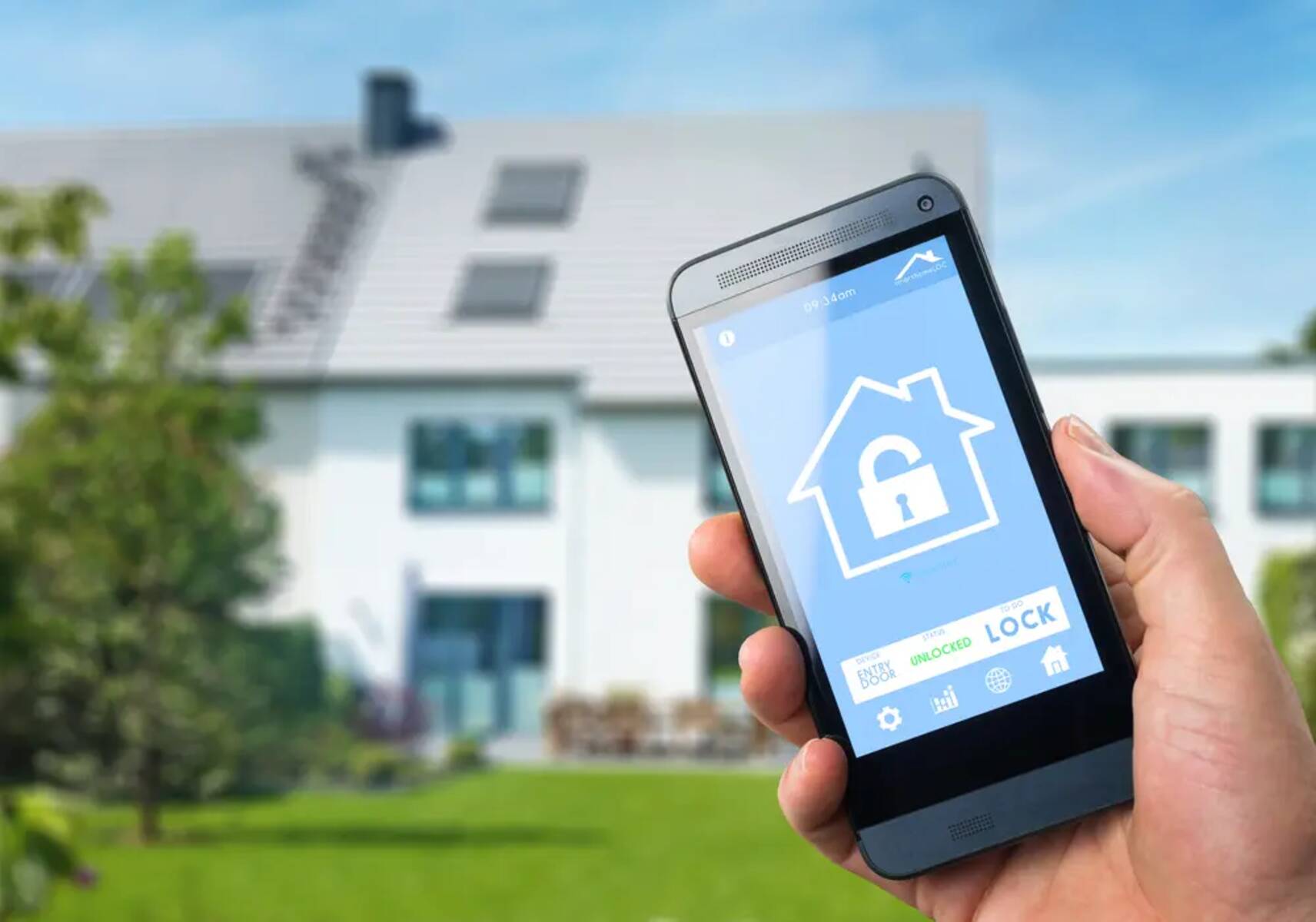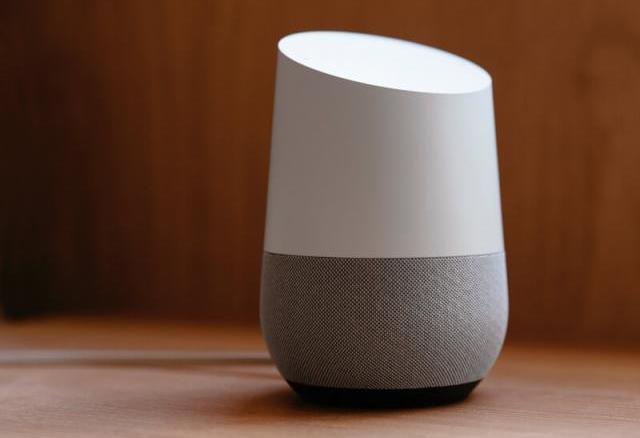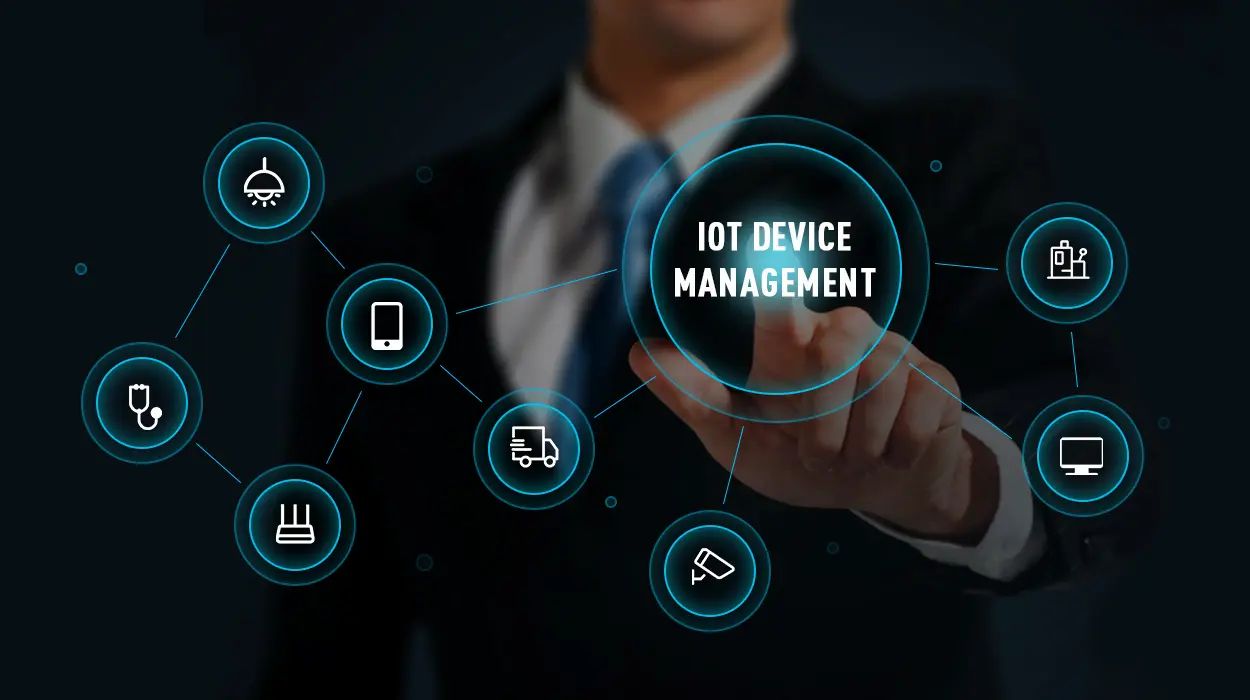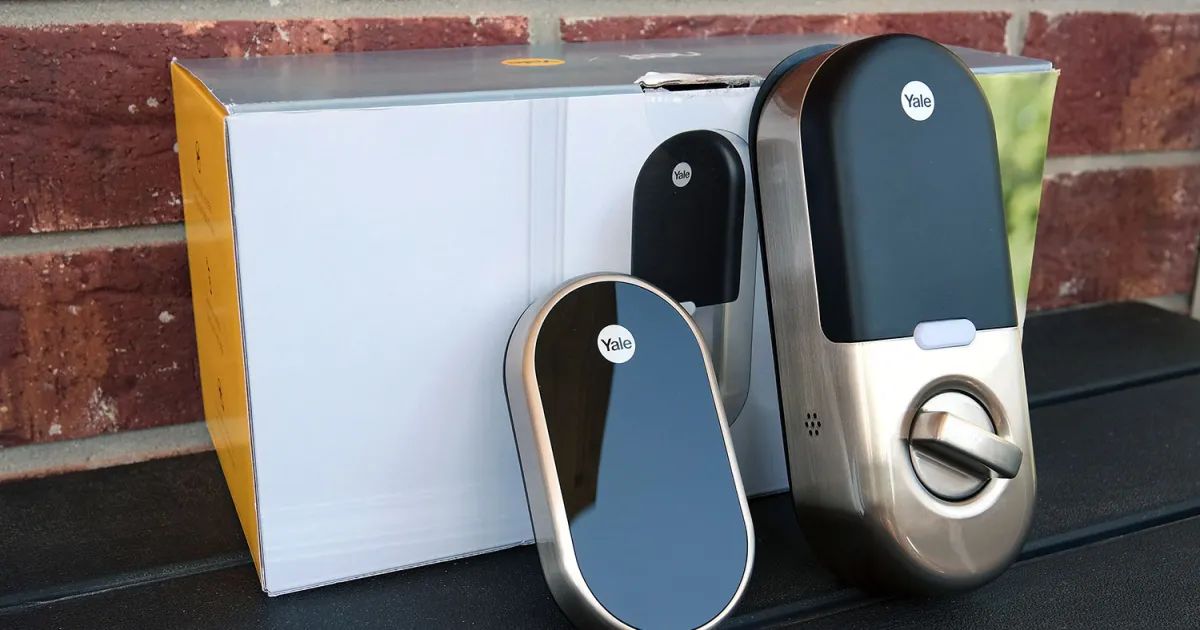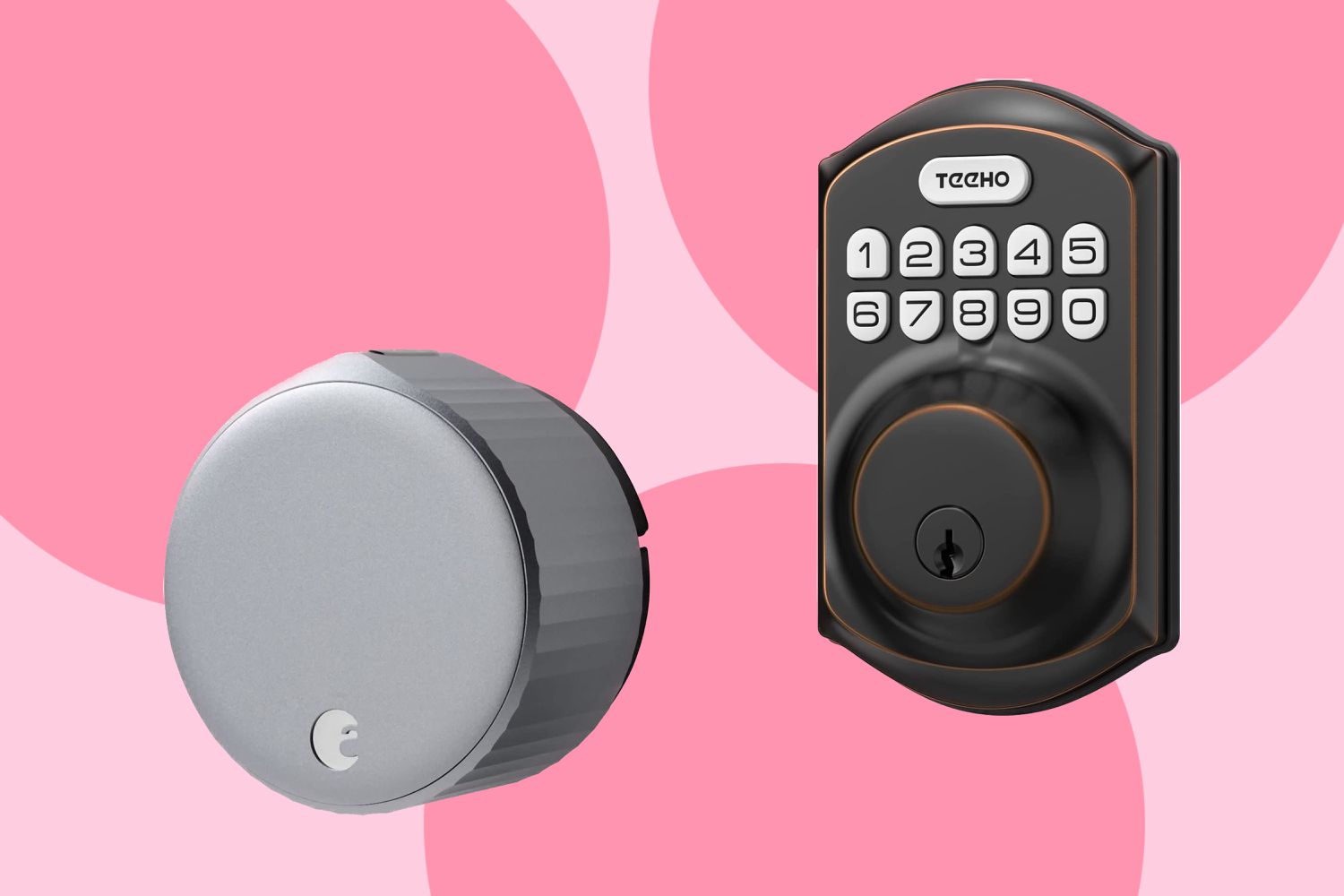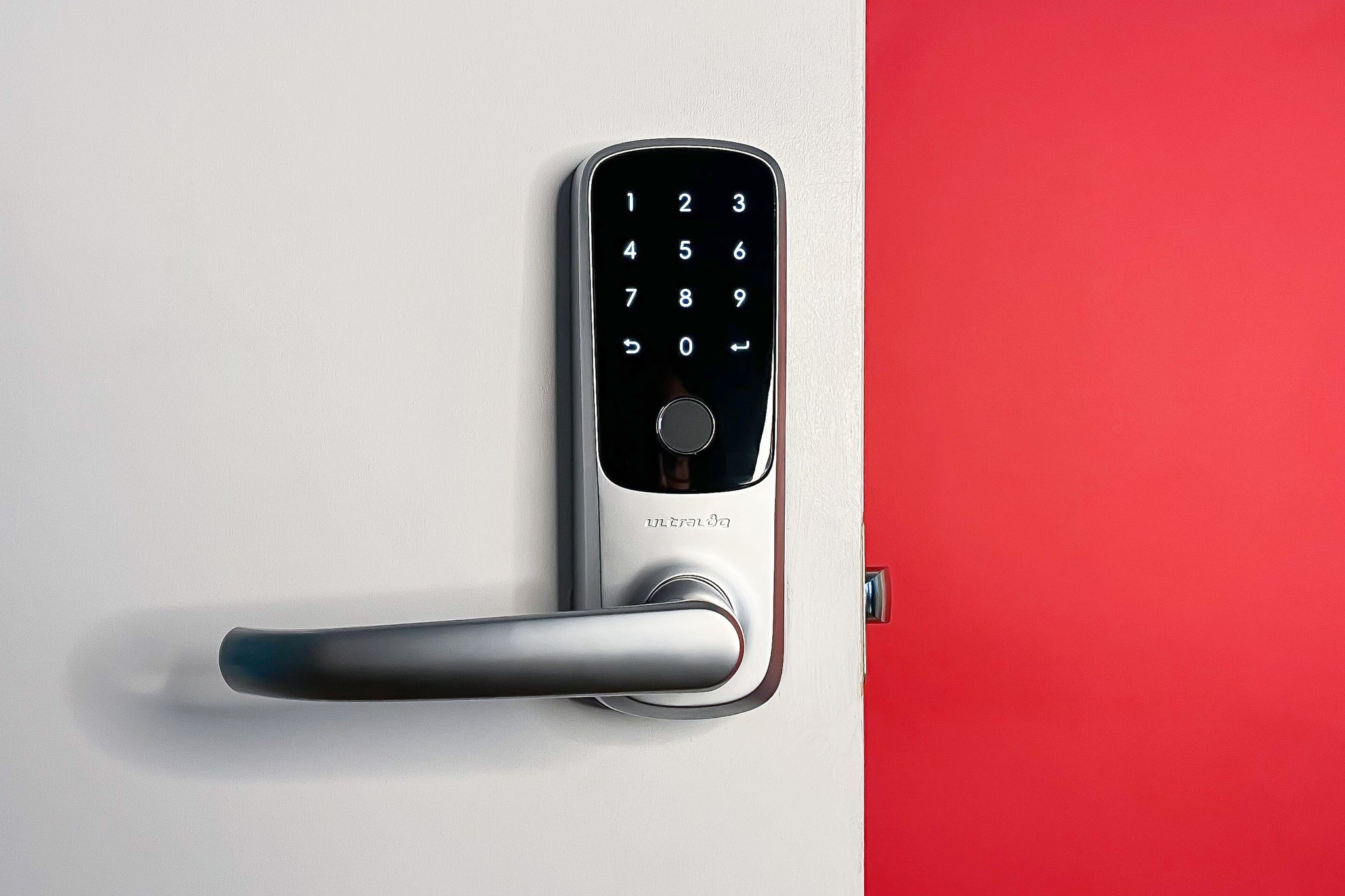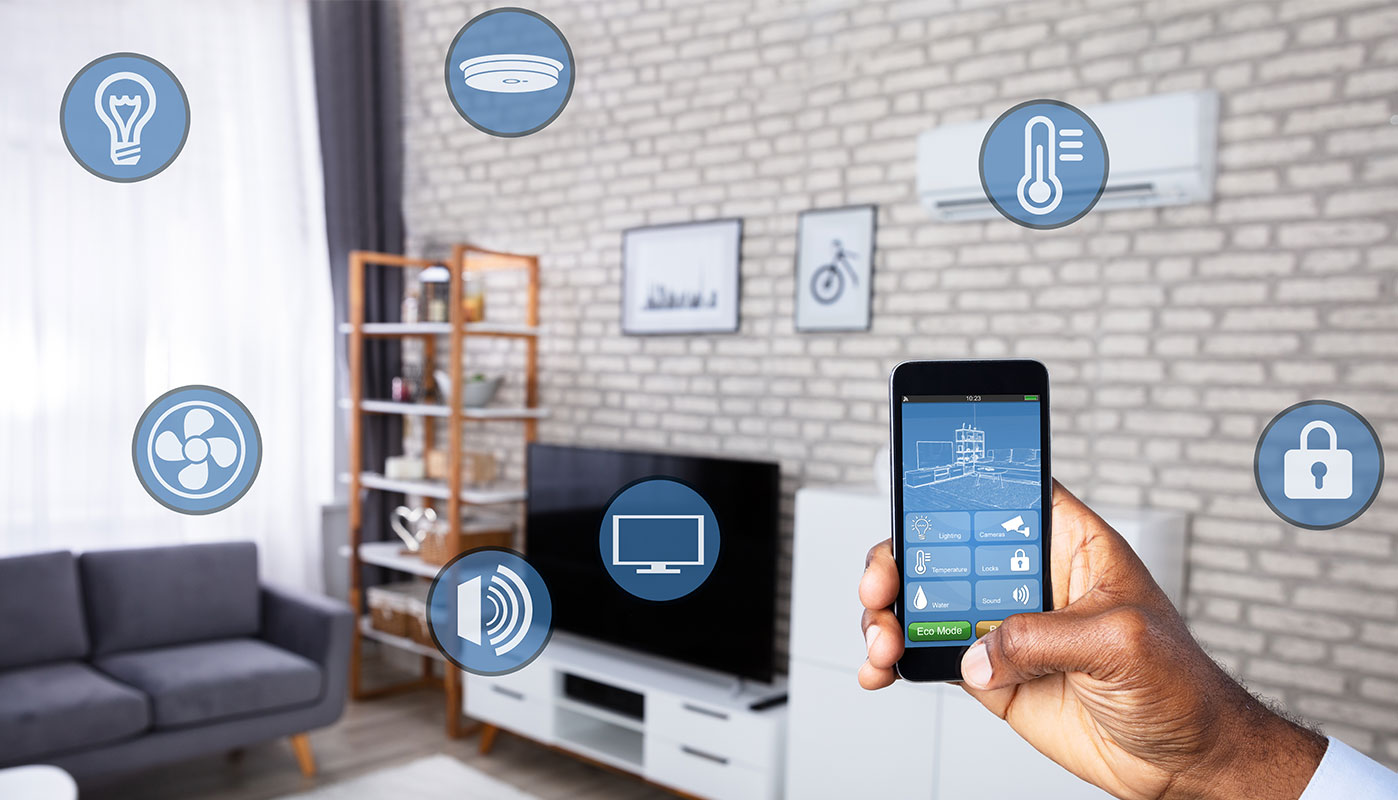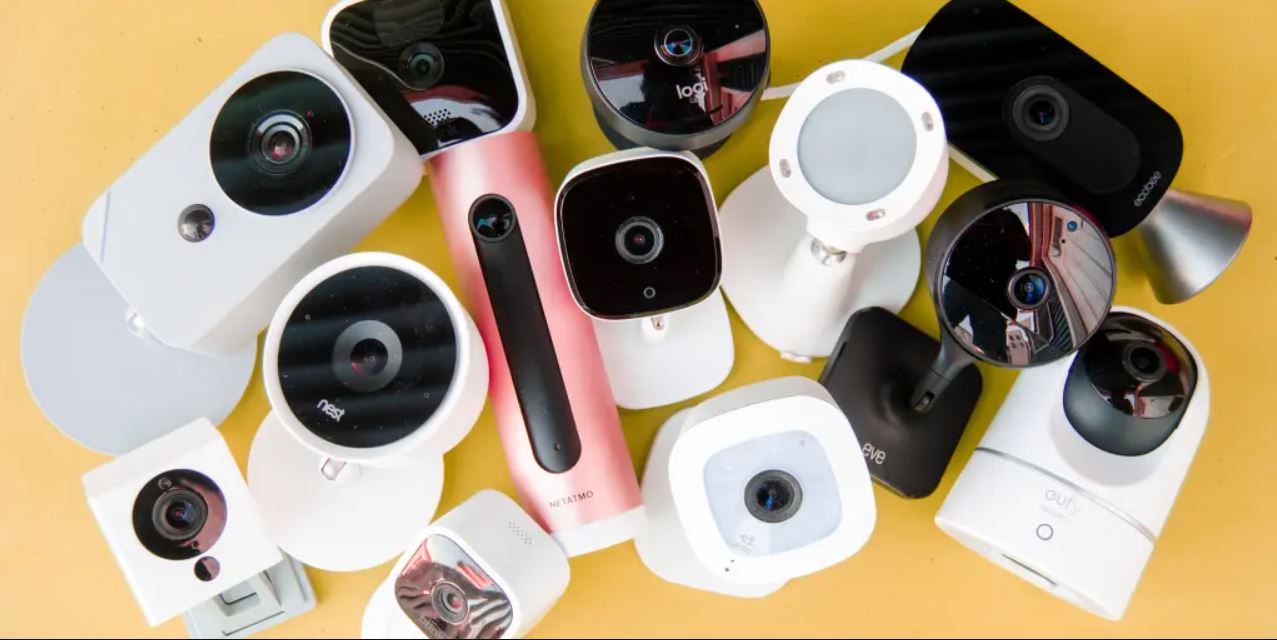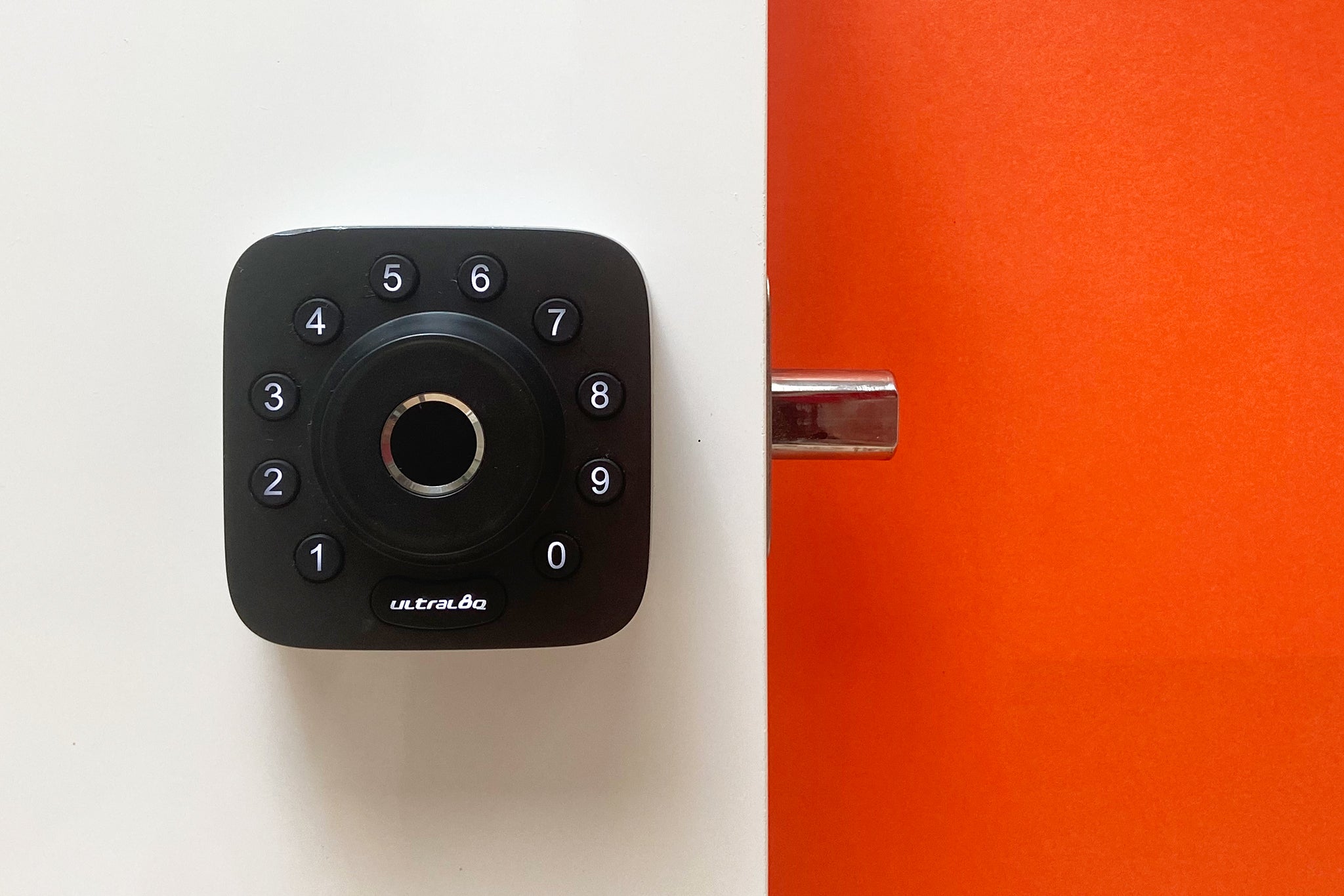Introduction
Home security has come a long way thanks to advancements in technology. The days of relying solely on traditional locks and alarm systems are long gone. Today, homeowners have the capability to remotely control and monitor their home security using various innovative devices and applications. This technological revolution has provided unparalleled convenience, peace of mind, and enhanced security for homeowners worldwide.
With the advent of smart technology, it is now possible to remotely control multiple aspects of your home security system, from door locks to surveillance cameras, alarm systems, and even home automation. The integration of smart devices and the internet has made it easier than ever to monitor and manage your home security, wherever you may be.
In this article, we will explore the different technologies that allow you to remotely control your home security. We will delve into the functionalities and benefits of each technology, giving you an understanding of how they work and how they can improve the safety of your home. Whether you want to keep an eye on your property while you’re away or simply have the convenience of locking and unlocking doors from a distance, these technological advancements have you covered.
From smart locks and surveillance cameras to alarm systems, motion sensors, and door/window sensors, there are a plethora of options available to meet your specific security needs. Additionally, the advancements in home automation systems and remote monitoring/control apps provide an unprecedented level of control and accessibility.
So, whether you are a tech-savvy homeowner or simply looking to enhance the security of your property, join us as we explore the exciting world of remote-controlled home security technology. Discover how these innovative solutions can provide convenience, safety, and peace of mind for you and your loved ones. Let’s dive in and explore the possibilities that technology has brought to the realm of home security.
Smart Locks
Gone are the days of fumbling for your keys at the front door. Smart locks have revolutionized the way we secure our homes, providing convenience, flexibility, and improved security. With smart locks, you can now control and monitor your door locks remotely, giving you peace of mind and added convenience.
Smart locks work by replacing the traditional key-and-lock mechanism with an electronic system that can be controlled using a smartphone, keypad, or even voice commands. Through a mobile app or web interface, homeowners can lock or unlock their doors from anywhere in the world, as long as they have an internet connection.
One of the major benefits of smart locks is the ability to provide temporary access to family members, guests, or service providers. With features such as virtual keys, you can grant access to individuals for a specific time period, ensuring that your home remains secure at all times. You can also receive notifications whenever someone enters or exits your home, allowing you to keep track of who has access to your property.
Another notable feature of smart locks is the integration with other smart home devices. For example, you can set up your smart lock to automatically unlock when you arrive home, based on your smartphone’s geolocation. Similarly, you can link your smart lock with your home automation system, allowing you to lock or unlock multiple doors with a single command.
Security is a top priority when it comes to smart locks, and manufacturers have taken stringent measures to prevent unauthorized access. Advanced encryption techniques and multi-factor authentication ensure that your smart lock remains secure and protected from hackers.
Installation of smart locks is relatively straightforward, and they can be retrofitted to existing doors without major modifications. However, it is important to ensure compatibility with your current door hardware before making a purchase. Some smart locks also offer integration with popular digital assistants, such as Amazon Alexa or Google Assistant, allowing you to control your locks using voice commands.
In summary, smart locks have brought a new level of convenience, security, and flexibility to home security. The ability to remotely control and monitor your door locks provides peace of mind and simplifies daily routines. Whether you’re looking to grant temporary access to others, integrate with your smart home system, or simply enhance the security of your home, smart locks are a worthwhile investment for any homeowner.
Surveillance Cameras
Surveillance cameras have long been a staple of home security, but technology has taken them to new heights. With the advent of smart surveillance cameras, homeowners can now remotely monitor their property and deter potential threats from anywhere in the world.
Smart surveillance cameras offer a range of advanced features that elevate their functionality and effectiveness. One of the key advantages is the ability to access live video feeds through a smartphone app or a web interface. This means that whether you are at work, on vacation, or simply in another room, you can keep an eye on your home in real-time.
Many smart cameras also offer the option for cloud storage, allowing you to save and access recorded footage remotely. This not only provides a backup of your video recordings but also enables you to review past events or incidents at your convenience. Some cameras even have the ability to automatically detect motion or sound and send notifications to your phone when activity is detected.
The integration of artificial intelligence (AI) technology has further enhanced the capabilities of surveillance cameras. AI-powered cameras can distinguish between humans, pets, and other objects, reducing false alarms caused by trivial movements. Additionally, advanced facial recognition algorithms offer the ability to identify unfamiliar faces and alert you instantly if an unrecognized individual is detected on your property.
To mitigate privacy concerns, smart cameras also provide customizable privacy zones, allowing you to specify areas that should not be monitored or recorded. This gives you full control over the privacy of your home and ensures that sensitive areas are not captured on camera.
Installation of smart surveillance cameras is typically straightforward, and many options are available for both indoor and outdoor use. Depending on your needs, you can choose from a variety of camera types, such as bullet, dome, or PTZ (pan-tilt-zoom) cameras. Some cameras even offer night vision capabilities, enabling you to monitor your property in low light or complete darkness.
In summary, smart surveillance cameras have revolutionized home security by providing remote monitoring, advanced features, and intelligent detection capabilities. Whether you’re looking to keep an eye on your property while you’re away or simply want an added layer of security, smart cameras offer peace of mind and deterrence against potential threats. Consider investing in these innovative devices to safeguard your home and loved ones.
Alarm Systems
Alarm systems have long been a fundamental component of home security, providing a crucial deterrent against burglaries and intrusions. However, advancements in technology have transformed traditional alarm systems into sophisticated and highly effective tools for protecting homes and alerting homeowners to potential threats.
One of the key benefits of modern alarm systems is the ability to remotely control and monitor them. Through a smartphone app or a web interface, homeowners can arm, disarm, and receive notifications from their alarm system no matter where they are. This enables you to have complete control over your security system and stay informed about any security incidents or emergencies.
Smart alarm systems also offer various additional features that enhance their effectiveness. For example, some systems integrate with motion sensors and door/window sensors, allowing you to detect and monitor movement and entry points around your home. If a sensor is triggered, you will receive instant alerts on your phone, enabling you to take quick action or contact the authorities if necessary.
Another key feature of modern alarm systems is the integration with surveillance cameras. When an alarm is triggered, some systems can automatically activate the connected cameras to capture video footage of the event. This not only provides valuable evidence in the event of a break-in but also helps to assess the situation and determine the appropriate response.
With the rise of smart home technology, alarm systems can now be seamlessly integrated into your overall smart home setup. This means that you can control your alarm system along with other smart devices, such as lights, thermostats, and door locks, through a central hub or smartphone app. This integration adds an extra layer of convenience and allows for more comprehensive home automation and security management.
Installation of modern alarm systems is typically straightforward, with wireless options available that eliminate the need for extensive wiring. Some systems even offer DIY installation, allowing homeowners to set up the system themselves without professional assistance. However, it is still advisable to consult with a security expert to ensure that the system is properly installed and configured for maximum effectiveness.
In summary, modern alarm systems provide homeowners with advanced features, remote control capabilities, and integration with other smart devices. By investing in an alarm system, you can significantly enhance the security of your home and gain peace of mind knowing that your property is protected. Explore the options available and choose an alarm system that best suits your needs and preferences for a comprehensive and reliable home security solution.
Motion Sensors
Motion sensors are a fundamental component of modern home security systems. Designed to detect movement within a designated area, these sensors play a vital role in preventing unauthorized access and alerting homeowners to potential intrusions. With advancements in technology, motion sensors have become more sophisticated, effective, and versatile in their applications.
There are various types of motion sensors available, including passive infrared (PIR) sensors, microwave sensors, and dual-technology sensors. PIR sensors are the most common type and work by detecting changes in infrared radiation caused by the movement of warm objects, such as humans or animals. Microwave sensors emit microwaves and measure the reflections caused by moving objects, while dual-technology sensors combine both PIR and microwave technologies for enhanced accuracy and reliability.
One of the primary benefits of motion sensors is their ability to trigger actions or alarms when movement is detected. For instance, when integrated into an alarm system, motion sensors can activate an alarm, send notifications to your smartphone, or even trigger the surveillance cameras to start recording. This immediate response acts as a powerful deterrent and helps to ensure that any potential intruders are swiftly detected.
Motion sensors can be strategically placed in key areas of your home, such as entryways, hallways, and high-value rooms. By doing so, you can create a comprehensive security network that covers all vulnerable points and provides an added layer of protection. Additionally, some motion sensors come with adjustable sensitivity settings, allowing you to customize their responsiveness to different environments and reduce false alarms caused by pets or moving objects.
With the advancement of smart home technology, motion sensors can also be integrated into home automation systems. This means that when motion is detected, certain actions can be triggered, such as turning on lights, adjusting temperature settings, or activating a pre-recorded voice message. This not only enhances security but also adds convenience and energy efficiency to your home.
Installation of motion sensors is generally straightforward, with wireless options available that eliminate the need for complex wiring. They can be installed on walls, ceilings, or corners depending on the desired coverage area. It is important to consider factors such as the sensor’s range, field of view, and positioning to ensure optimal performance.
In summary, motion sensors are an essential component of home security systems, enabling the detection of movement and providing immediate alerts or triggers for actions. By incorporating motion sensors into your security setup, you can enhance the level of protection for your home and enjoy peace of mind knowing that your property is being monitored. Choose the right type and placement of motion sensors to create a robust security network tailored to your specific needs and requirements.
Door and Window Sensors
Door and window sensors are essential components of any comprehensive home security system. These sensors provide a vital layer of protection by triggering alerts or alarms when doors or windows are opened or tampered with. With advancements in technology, door and window sensors have become more sophisticated, reliable, and seamlessly integrated into smart home security systems.
Door sensors typically consist of two parts – a sensor and a magnet. When the door is closed, the magnet is in close proximity to the sensor, creating a closed circuit. When the door is opened, the magnet moves away from the sensor, causing the circuit to break and triggering an alert or alarm. Window sensors work on the same principle, but with a slight variation in design to accommodate different window types.
One of the primary advantages of door and window sensors is their ability to detect unauthorized entry or tampering. Whenever a door or window is opened while the alarm system is armed, the sensor immediately detects the change and triggers an alarm, alerting you and potentially deterring intruders. This rapid response ensures that any potential security breaches are quickly identified and addressed.
Door and window sensors can be easily integrated into a broader home security system, allowing you to monitor and control them remotely through a central hub or smartphone app. This means that you can receive instant notifications when a door or window is opened, even if you are away from home. Some sensor systems even allow for customization, enabling you to set different responses for different doors or windows, depending on your security preferences.
One of the key benefits of modern door and window sensors is their compatibility with other smart home devices. For example, you can set up your sensors to trigger specific actions when a door or window is opened, such as turning on lights, activating surveillance cameras, or even playing a pre-recorded warning message. This integration not only enhances security but also adds convenience and customization to your home automation setup.
Installation of door and window sensors is typically straightforward, with both wired and wireless options available. Wireless sensors, in particular, are easy to install and can be placed discreetly on doors and windows without extensive wiring. It is important to ensure proper alignment and placement of the sensor and magnet to ensure optimal performance and minimize false alarms.
In summary, door and window sensors are crucial components of a comprehensive home security system, providing immediate detection and alerts against unauthorized entry or tampering. By incorporating these sensors into your security setup, you can enhance the protection of your home and have peace of mind knowing that your doors and windows are being monitored. Select the right type and number of sensors for your specific needs, and integrate them into your smart home system for a seamless and effective home security solution.
Garage Door Controllers
Garage door controllers have become an integral part of modern home security, offering convenience, safety, and peace of mind. These controllers allow homeowners to remotely operate and monitor their garage doors, ensuring that they are securely closed and providing an added layer of security for their property.
With a garage door controller, you can open or close your garage door with the touch of a button on your smartphone or through a designated remote control. This eliminates the need for physical keys or manual operation, making it convenient to enter or exit your garage without hassle. Additionally, some controllers offer the option for scheduling, enabling you to automate the opening and closing of your garage door at specific times.
One of the key advantages of garage door controllers is the ability to monitor the status of your garage door remotely. Through a smartphone app or a web interface, you can check whether your garage door is open or closed, providing peace of mind and allowing you to take necessary action if the door is left open accidentally. Some controllers also send notifications to your phone whenever the door is opened or closed, keeping you informed of any activity.
Integration with home automation systems allows garage door controllers to be part of a broader smart home setup. This means that you can incorporate your garage door into routines or automation sequences, such as turning on lights and adjusting thermostats when the garage door is opened or closed. This integration further enhances convenience, energy efficiency, and the overall security of your home.
Garage door controllers come in various forms, including standalone devices or integrated systems that work with existing garage doors. Standalone controllers are typically wireless and can be easily installed, while integrated systems require professional installation and may necessitate specific compatibility with your garage door opener model.
Security is a top priority when it comes to garage door controllers, and manufacturers have taken measures to ensure secure access. Many controllers utilize encryption protocols and secure communication channels to prevent unauthorized access and hacking attempts. It is essential to choose a reputable and reliable controller from a trusted manufacturer to ensure the highest level of security for your garage and home.
In summary, garage door controllers offer convenience, security, and peace of mind by allowing homeowners to remotely operate and monitor their garage doors. By incorporating these controllers into your home security system or smart home setup, you can seamlessly control and monitor your garage door, ensuring it is securely closed and enhancing the overall security of your property. Explore the available options and choose a garage door controller that fits your specific needs and provides the level of convenience and security you desire.
Video Doorbells
Video doorbells have quickly gained popularity as a modern and effective home security solution. Combining a traditional doorbell with a built-in camera, these devices allow homeowners to see, hear, and communicate with visitors at their front door, even when they are not physically present. The integration of video technology provides an additional layer of security and peace of mind.
When a visitor presses the button on a video doorbell, the built-in camera captures a live video feed of the person standing at the door. This video feed is then sent to your smartphone, tablet, or computer through a dedicated app, allowing you to see who is at the door in real-time. Some video doorbells also offer two-way audio, enabling you to have a conversation with the visitor from wherever you are.
One of the primary benefits of video doorbells is the ability to deter potential intruders or unwanted visitors. The presence of a visible camera acts as a deterrent and can discourage burglars or trespassers from approaching your property. Additionally, the ability to communicate with visitors through the doorbell allows you to give the impression that you are at home, even when you are not.
Video doorbells offer further convenience and security by enabling you to monitor any activity at your front door. Whether it’s a package delivery, a solicitor, or a friend stopping by, you can keep an eye on your property and make informed decisions about how to respond. Some video doorbells also offer motion detection capabilities, sending immediate notifications to your device when movement is detected near your front door.
Integration with smart home systems and devices makes video doorbells even more versatile and powerful. You can link your video doorbell with other smart devices, such as smart locks or home automation systems, creating a comprehensive and seamless home security network. For example, you can remotely unlock your front door to let in a trusted visitor or turn on the porch lights when someone approaches the door at night.
Installation of video doorbells is typically straightforward and can often be done by homeowners themselves. Most video doorbells are wireless and run on battery power or are wired to the existing doorbell system. It is important to choose a video doorbell that is compatible with your home’s wiring and network infrastructure to ensure optimal performance.
In summary, video doorbells provide homeowners with a convenient and comprehensive solution for front door security. By combining video technology, two-way audio, and integration with smart home systems, video doorbells offer real-time monitoring, communication, and deterrence against potential threats. Consider investing in a video doorbell to enhance the security of your home and gain peace of mind knowing that you can always see and interact with visitors at your front door, no matter where you are.
Home Automation Systems
Home automation systems have revolutionized the way homeowners control and manage various aspects of their homes. These systems allow for seamless integration and control of smart devices, creating a centralized hub that simplifies daily routines, enhances convenience, and improves home security. With home automation, you can have full control over your home’s lighting, temperature, appliances, and security systems with just a few taps on your smartphone or through voice commands.
One of the key benefits of home automation systems is the ability to customize and create personalized routines and schedules. You can set up routines to automatically turn on the lights when you enter a room, adjust the thermostat based on your preferred temperature settings, or even simulate occupancy by randomly turning on and off lights when you’re away from home. These automations not only increase convenience but also provide the impression that someone is home, enhancing the security of your property.
Integration with security systems is a major advantage of home automation. By incorporating your home security devices, such as surveillance cameras, motion sensors, and door locks, into your home automation system, you can have full control and monitoring capabilities from a centralized platform. This means you can arm or disarm your security system, receive real-time alerts about any security events, and even view live video feeds of your surveillance cameras, all from your smartphone or a dedicated control panel.
Home automation systems also offer seamless integration with other smart devices and services. You can connect your home automation system with voice assistants like Amazon Alexa or Google Assistant, allowing you to control your smart devices through voice commands. Additionally, many home automation platforms offer integration with popular smart home devices, such as thermostats, smart plugs, and motorized window coverings, giving you complete control and flexibility over your home’s functionality.
Installation and setup of home automation systems can vary depending on the complexity and scope of the system. Some systems require professional installation, especially for devices that require electrical or wiring modifications. However, there are also do-it-yourself (DIY) options available for those who prefer a more hands-on approach. It is important to choose a reliable and compatible home automation system that fits your specific needs and integrates seamlessly with your existing smart devices.
In summary, home automation systems provide homeowners with centralized control, convenience, and enhanced security for their homes. By automating various aspects of your home, you can simplify daily routines, save energy, and ensure the security and comfort of your property. Whether you’re looking to integrate your security system, control lighting and temperature settings, or create personalized routines, a home automation system offers endless possibilities to enhance your lifestyle and elevate your home security. Consider investing in a home automation system to experience the benefits of a smarter, more secure home.
Remote Monitoring and Control Apps
Remote monitoring and control apps have emerged as invaluable tools for homeowners to manage and monitor their home security systems from anywhere in the world. These apps provide a convenient and user-friendly interface that allows you to access and control various aspects of your home security, from surveillance cameras and alarm systems to door locks and smart devices, all from the palm of your hand.
One of the key advantages of remote monitoring and control apps is the ability to access live video feeds from your surveillance cameras. This means you can keep an eye on your property in real-time, view recorded footage, and receive notifications when motion is detected or when specific events occur. With just a few taps on your smartphone, you can have peace of mind knowing that you can monitor your home and check on the activities happening in and around it, regardless of your physical location.
Remote control functionality is another important feature of these apps. Whether you want to arm or disarm your alarm system, lock or unlock your doors, or adjust your home’s thermostat, you can do it all remotely through the app. This level of control and convenience ensures that you can easily manage your home security and make adjustments to fit your needs, even when you are far away.
Integration with other smart devices and systems is a major advantage of remote monitoring and control apps. Most apps are designed to work with a wide range of smart devices, such as smart locks, smart thermostats, and home automation systems. This means that you can control and monitor all your devices from one centralized app, creating a seamless and comprehensive smart home experience.
Security is a top priority when it comes to remote monitoring and control apps. App developers employ robust encryption protocols and security measures to protect your data and ensure that unauthorized access is prevented. Additionally, many apps offer multi-factor authentication, ensuring that only authorized users can access and control your home security system.
The availability of remote monitoring and control apps varies depending on the specific devices and systems you have installed in your home. Some device manufacturers offer their own dedicated apps, while others may require you to use a third-party app that supports their devices. It is important to choose apps that are compatible with your devices and provide the functionalities and features you require.
In summary, remote monitoring and control apps provide homeowners with a convenient and intuitive way to monitor and manage their home security systems from anywhere. With live video feeds, remote control capabilities, and integration with other smart devices, these apps offer comprehensive control and peace of mind. Consider installing and using remote monitoring and control apps to take full advantage of your home security system and ensure that your home is protected at all times, no matter where you are.
Conclusion
The advancements in technology have completely transformed the way we approach home security. With the availability of smart devices, remote monitoring and control apps, and home automation systems, homeowners now have unprecedented control and convenience when it comes to securing their homes. From smart locks and surveillance cameras to alarm systems, motion sensors, and video doorbells, these technologies offer enhanced security, peace of mind, and ease of use.
Smart locks provide the convenience of remotely controlling and monitoring your door locks, while surveillance cameras offer real-time video feeds and recording capabilities to keep an eye on your property. Alarm systems with motion sensors and door/window sensors provide immediate alerts and deterrents against intruders. Garage door controllers allow you to operate and monitor your garage door from anywhere. Video doorbells enable you to see and communicate with visitors at your front door, even when you’re not home. And home automation systems integrate all these devices, allowing for centralized control and customization of your security measures.
The availability of remote monitoring and control apps further enriches the home security experience, enabling homeowners to access and manage their security systems from anywhere using their smartphones. These apps provide live video feeds, remote control functionalities, and integration with other smart devices, ensuring that you are always in control of your home’s security.
In conclusion, the technology available for remotely controlling and monitoring home security systems provides unparalleled convenience, improved security, and peace of mind for homeowners. The integration of smart devices, remote monitoring and control apps, and home automation systems allows for seamless and comprehensive security management, no matter where you are. Investing in these innovative technologies and incorporating them into your home security system can significantly enhance the safety of your property and the well-being of your loved ones. Choose the solutions that best fit your needs and enjoy the benefits of a smarter and more secure home.







